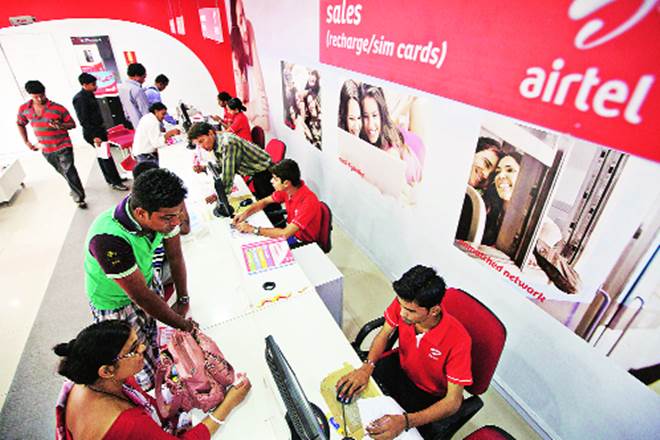Bharti bucked the competition-driven downtrend of the past several quarters with a strong fourth-quarter performance. Consolidated Ebitda grew by a robust 7% q-o-q to Rs 66 bn (5% beat), with the margin expanding 150bp q-o-q (200bp beat) to 32.2%, led by a turnaround in the India wireless business margin (+410bp q-o-q). However, adj. net loss widened to Rs 12 bn (our estimate: Rs 7.2 bn) from Rs 10.4 bn in the previous quarter. For FY19, consolidated revenue/Ebitda/PAT declined by 2%/14%/ 63% y-o-y.
India wireless business makes a strong comeback…
One of the notable features of the Q4FY19 results was the strong turnaround in the India wireless business, where revenue increased 4% q-o-q (3% beat). This can be attributed to (i) a lesser churn and an accelerated shift of low-ARPU subscribers to minimum recharge plans and (ii) an improving incremental broadband market share. Accordingly, Ebitda grew by a stellar 27% q-o-q to Rs 24.7 bn. In USD terms, Africa revenue stood flat q-o-q, but a sharp decline in opex facilitated healthy 6% q-o-q Ebitda growth.

… and the outlook for the company appears favourable too
Evidently now, ‘minimum recharge’ is proving to be a prudent strategy. This, along with the increasing shift of feature phone subscribers to smartphones and the thrust on improving the MBB (mobile broadband) share (with re-launch of ‘Airtel Thanks’), augurs well for Bharti’s India wireless business. This is particularly comforting amid expectations of a reduction in IUC gains and some additional subscriber churn. Africa business, too, has been playing a key role in overall growth. We, thus, largely maintain our estimate (FY19-21) of revenue/Ebitda CAGR of 7%/10% for the company.
Valuation view
In our view, BHARTI has multiple moving levers in place—(i) a rebound in India wireless business, (ii) fund-raising plans and (iii) peaking out of capex – which should help prune the ballooned net debt and make it self-sufficient. We have factored in an Rs 250-bn rights issue and 15% reduction in capex (with an upward bias) in FY20. This will reduce cash burn and net debt-to-Ebitda to Rs 77 bn and 3.5x in FY20 versus Rs 200 bn and 4.3x, respectively, in FY19. Incrementally, the Africa IPO and the Bharti Infratel stake sale could drive additional deleveraging. The stock is attractively priced at 7x FY21e Ebitda. Maintain Buy with an sum-of-the-parts (SOTP) based target price of Rs 410.
Management’s strategy of minimum recharge plans has started showing results – as evident in the strong performance in the fourth quarter of FY19.
We believe India wireless business should witness tailwinds from the re-launch of ‘Airtel Thanks’ and the shift from 2G to 4G. However, reducing IUC (interconnect usage charges) gains may partly offset the benefits. Strong momentum in the Africa business should continue on the back of (i) potential for increasing revenue market share in certain countries, (ii) operating leverage and (iii) fillip from Airtel Money. Consequently, we have largely maintained our estimates—revenue/ Ebitda CAGR of 7%/10% over FY20-21.


